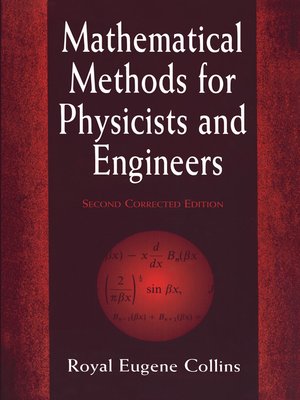Mathematical Methods for Physicists and Engineers
ebook ∣ Second Corrected Edition · Dover Books on Physics
By Royal Eugene Collins

Sign up to save your library
With an OverDrive account, you can save your favorite libraries for at-a-glance information about availability. Find out more about OverDrive accounts.
Find this title in Libby, the library reading app by OverDrive.



Search for a digital library with this title
Title found at these libraries:
| Library Name | Distance |
|---|---|
| Loading... |
This practical, highly readable text provides physics and engineering students with the essential mathematical tools for thorough comprehension of their disciplines. Featuring all the necessary topics in applied mathematics in the form of programmed instruction, the text can be understood by advanced undergraduates and beginning graduate students without any assistance from the instructor. Topics include elementary vector calculus, matrix algebra, and linear vector operations; the many and varied methods of solving linear boundary value problems, including the more common special functions of mathematical physics; the calculus of variations, and variational and perturbation approximations applicable to boundary value problems and nonlinear differential equations; curve fitting and numerical approximation methods; the basic elements of probability and their application to physical problems; and integral equations. Rather than aiming at a complete mastery of these complicated subjects, the text focuses on the fundamental applied mathematics the student needs to deal with physics and engineering problems. Instructors in those subjects will particularly appreciate this volume's function as a self-contained study resource, allowing them to devote fewer classroom hours to formal lectures in mathematics.







